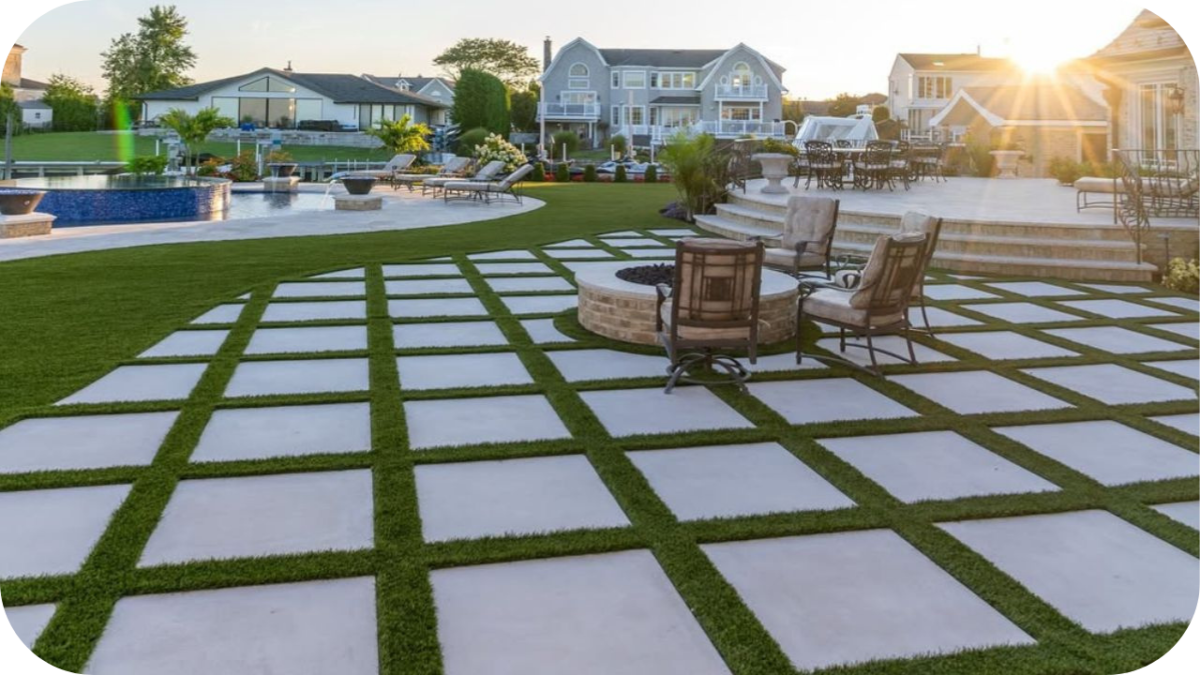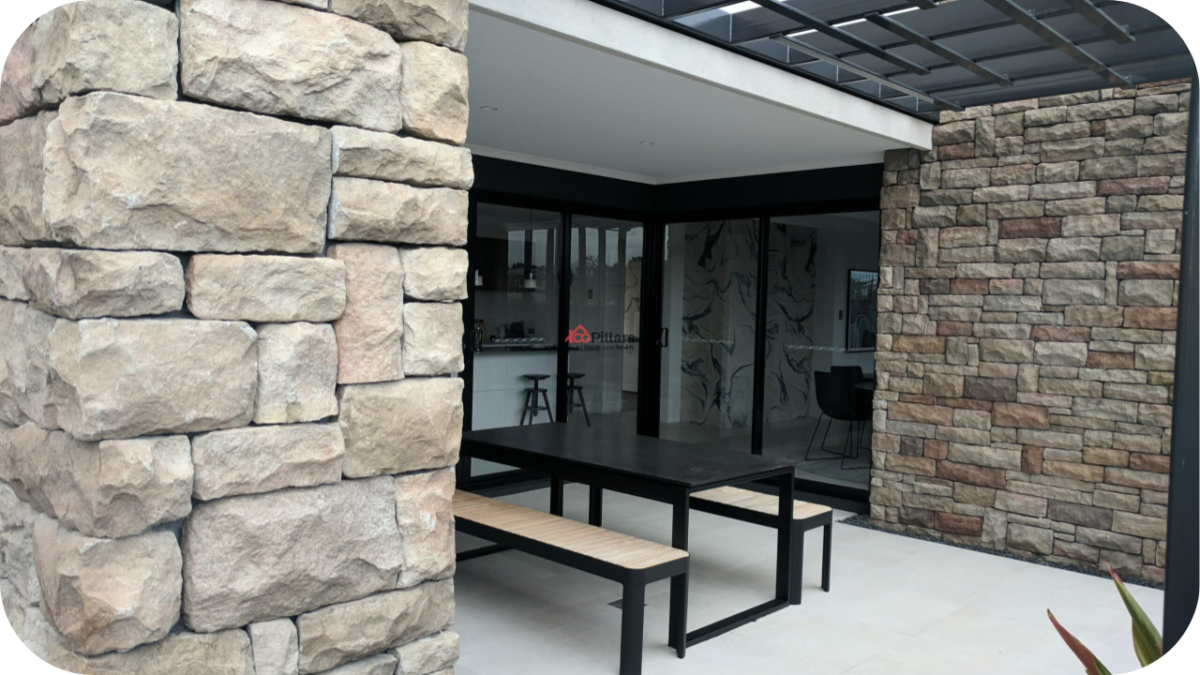Top 10 Mistakes to Avoid When Choosing Natural Stone
Natural stone has long been a favourite in architecture and landscaping, thanks to its unmatched beauty, durability, and timeless appeal. But as with any premium material, choosing the right stone requires more than just a good eye.
Rushing the selection or ignoring key details can lead to costly and irreversible errors. Whether you’re building a feature wall, paving an alfresco area, or cladding a façade, there are specific pitfalls that many homeowners and designers fall into.
This article breaks down the top ten mistakes to avoid when selecting natural stone, helping you get the best results in form, function, and finish.
1. Overlooking Finish and Texture Options
The surface finish of your natural stone influences more than just the overall look. It plays a vital role in how safe and suitable the material is for its intended space.
Polished stone creates a refined, high-gloss effect that suits statement interiors, but it can become slippery in wet areas such as bathrooms and pool surrounds. Tumbled, flamed, or bush-hammered finishes offer a more textured feel, ideal for improving grip underfoot.
On walls, honed finishes reduce glare and soften lighting, making them excellent for ambient design. Texture also impacts cleaning; rougher surfaces conceal marks but collect more debris.
Before making a final choice, always consider where and how the stone will be used to ensure both visual appeal and long-term performance.
2. Ignoring Stone Suitability for the Environment
Choosing a beautiful stone is not enough if it cannot perform in your climate or setting. Some stones weather differently depending on exposure to sunlight, rain, salt, or frost. For example, limestone may wear well in shaded garden paths but could degrade if used in coastal pool surrounds.
Granite and quartzite tend to be highly durable and handle fluctuating temperatures better. Indoor stones might not always work outside, especially if they are too porous or sensitive to moisture.
Before committing, check if the material suits your location, use-case, and exposure level. Consulting with your supplier about how each stone type behaves over time is essential to avoid premature wear or costly replacements.
3. Focusing Only on Aesthetics
Natural stone brings visual richness that manufactured materials often cannot match. However, focusing solely on colour, veining, or pattern can be a critical mistake.
Not every beautiful stone is built to handle high traffic or harsh environments. A light, porous marble might look stunning in a hallway, but it may struggle with stains and scratches. Functionality must match the visual intent.
Always evaluate slip resistance, porosity, strength, and maintenance requirements alongside aesthetics. A balanced decision ensures your space remains as practical as it is beautiful. The best stone is one that performs well without compromising the design vision you have in mind.
4. Misjudging Tile and Slab Sizing
Stone size dramatically affects installation, appearance, and long-term usability. Large-format slabs create a seamless, luxurious feel in open areas but may be overkill in tight spaces or difficult to manoeuvre during installation.
Small tiles or cobbles offer flexibility for curved or uneven surfaces but can increase labour costs due to added joints and complexity. Using the wrong size can make a space feel disjointed or result in higher wastage.
For example, oversized pavers on a steep incline could pose safety concerns. Work closely with your installer and supplier to determine the right size for your layout, design intent, and practical constraints.
5. Skipping Sealants and Surface Protection
Natural stone is often porous, meaning it can absorb liquids, dirt, or stains over time. While sealing may seem optional, it is one of the most important steps in stone care. Without it, oils, wine, moisture, and even footprints can permanently alter the surface.
This is especially true for travertine, limestone, and marble, which are more absorbent than granite or quartzite. Sealants also protect against weathering, mould, and discolouration in outdoor settings.
Choose a high-quality, breathable sealant that suits your finish and reapply as recommended. Avoid the assumption that once installed, the stone is maintenance-free. Long-term beauty depends on this basic yet essential protection.
6. Not Factoring in Installation Requirements
Stone installation is not like laying ceramic tiles. It requires specialised handling, tools, and adhesives. Ignoring these details can lead to weak bonds, uneven surfaces, or damaged pieces.
Some stones are heavier or more brittle than others, demanding extra support or specific substrates. The type of substrate, joint spacing, and even adhesive curing time can impact performance. For exterior applications, drainage and slope become critical to prevent water pooling or freeze-thaw damage.
Speak with professionals who have experience working with natural stone and follow supplier guidelines to the letter. Proper installation protects your investment and ensures the stone looks and functions as intended.
7. Choosing the Wrong Stone for High-Traffic Areas
Not all stones are created equal when it comes to wear and tear. High-traffic zones like entryways, hallways, patios, or driveways require stones with high durability, slip resistance, and structural strength.
Soft stones like soapstone or some types of marble might develop scratches or chips quickly under frequent foot traffic. Granite, quartzite, or dense bluestone perform much better in these conditions.
Finish also plays a role; bush-hammered or flamed textures are less likely to show wear than polished surfaces. When planning your layout, consider the level of traffic each area will receive and select a material that can handle the load without rapid deterioration.
8. Underestimating Colour Variation and Batch Differences
Natural stone is, by its very nature, inconsistent. Each slab or tile can differ in tone, veining, or texture, even within the same batch.
Failing to account for this variation can lead to disappointment once the stone is installed. Samples may not always represent the full range of the material. It’s important to view multiple pieces before making a final decision.
For large-scale projects, request a dry lay to preview the overall pattern and colour balance. Accepting that some variation adds to the stone’s charm is helpful, but planning ahead helps avoid unpleasant surprises. Always ask your supplier about expected variation levels.
9. Cutting Corners on Supplier Quality and Expertise
Stone is a long-term investment, and the supplier you choose plays a big role in the result. Opting for the lowest price often means compromising on stone quality, support, or variety.
Reputable suppliers provide more than just products; they offer guidance on installation, care, and compatibility with your design goals. They also have better control over sourcing, helping avoid inconsistencies or defects.
Look for showrooms where you can view the stone in person and speak with knowledgeable staff. Ask about provenance, finishes, and care instructions. Working with a trusted supplier gives peace of mind and sets the foundation for a successful project.
10. Overlooking Long-Term Maintenance
Even the most durable natural stone requires care over time. Regular maintenance is essential to preserve its finish and longevity.
Neglecting this step can lead to dullness, staining, and surface degradation. Some stones, like marble and travertine, require more frequent sealing and gentler cleaning methods, while others, like granite are more forgiving.
Sweeping debris, cleaning spills immediately, and avoiding harsh chemicals are basic practices that make a big difference. Understanding the ongoing maintenance needs of your chosen stone ensures that it stays beautiful and functional. Speak with your supplier about the best practices and commit to a routine that matches your lifestyle.
Conclusion
Choosing natural stone is an investment in both beauty and long-term performance. By steering clear of these common mistakes, you protect your space from premature wear, functional issues, and costly fixes.
A well-informed choice ensures your home or landscape remains elegant and enduring. For tailored guidance and premium-quality stone, speak to the experts at Splendour in Stone and take the next step with confidence in your project.





